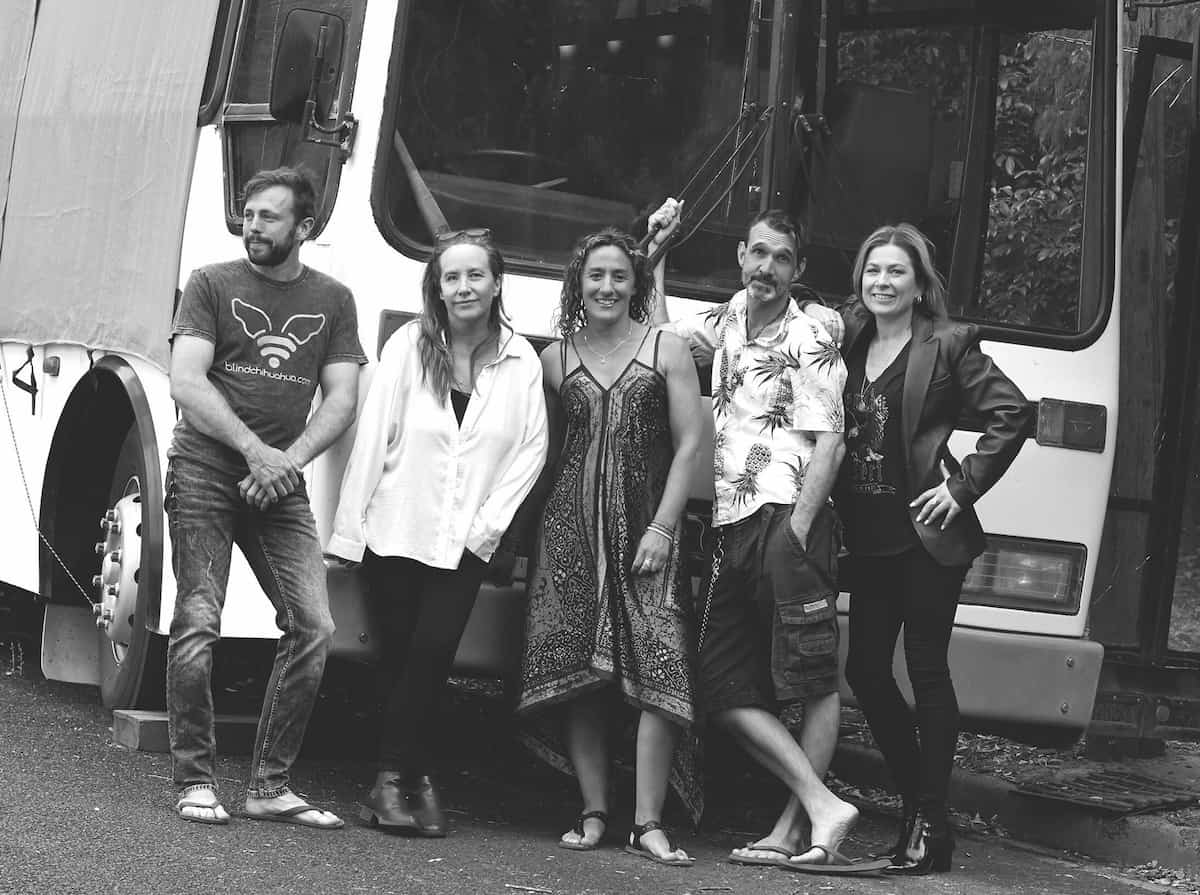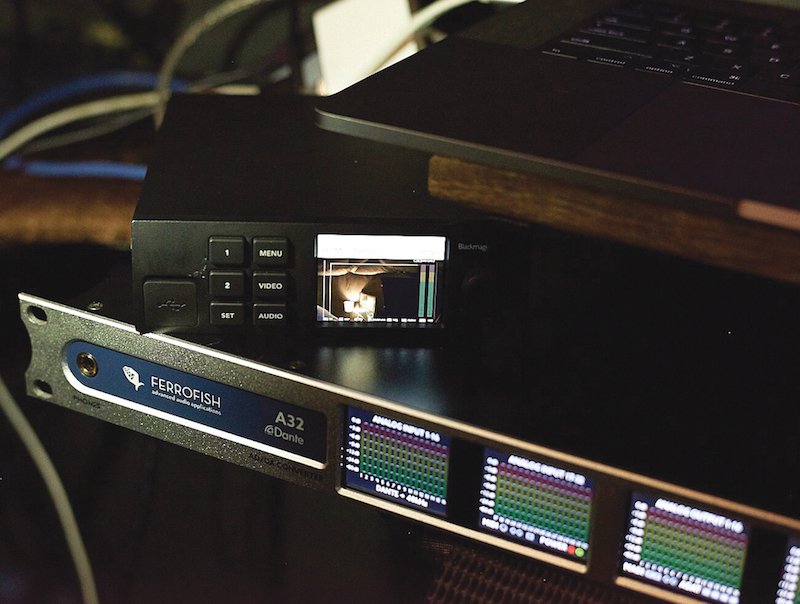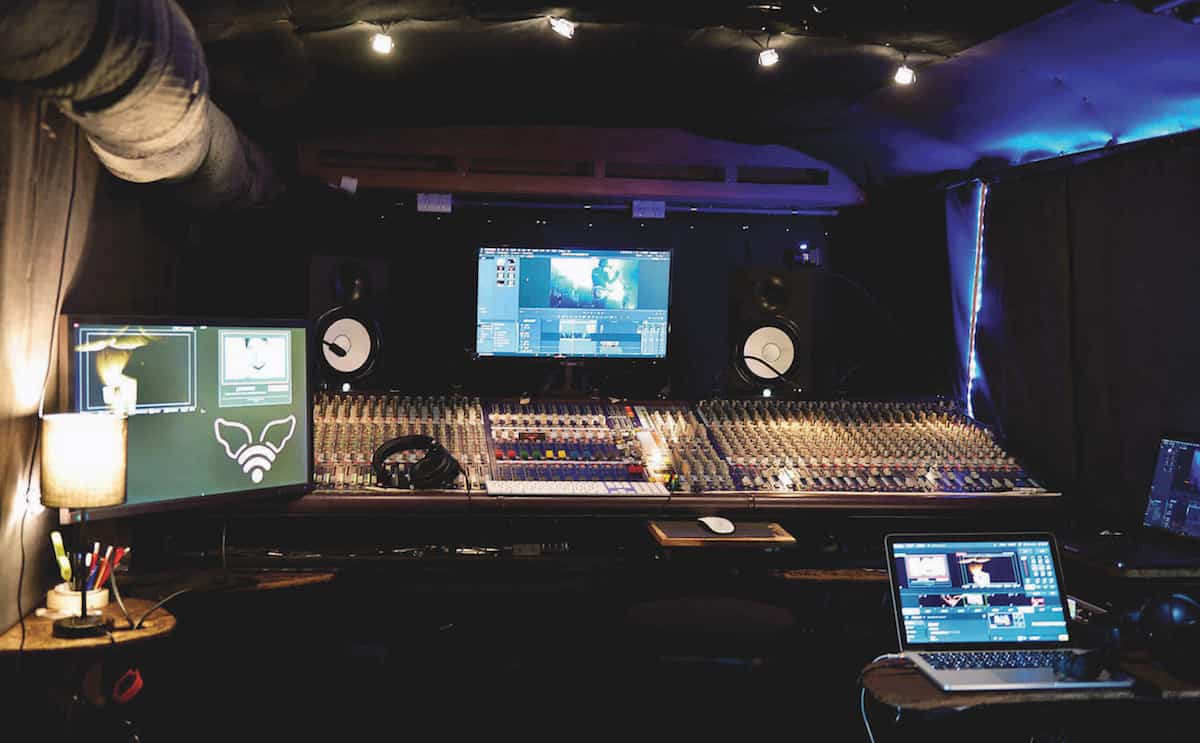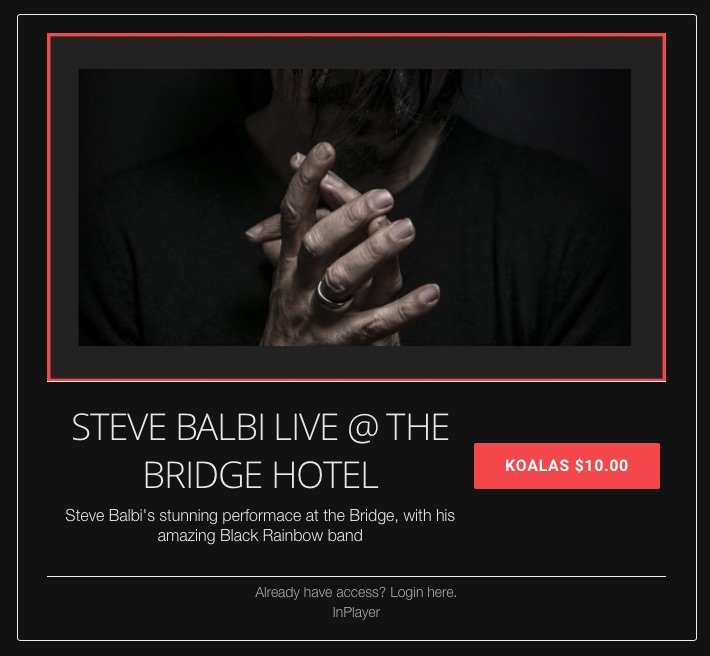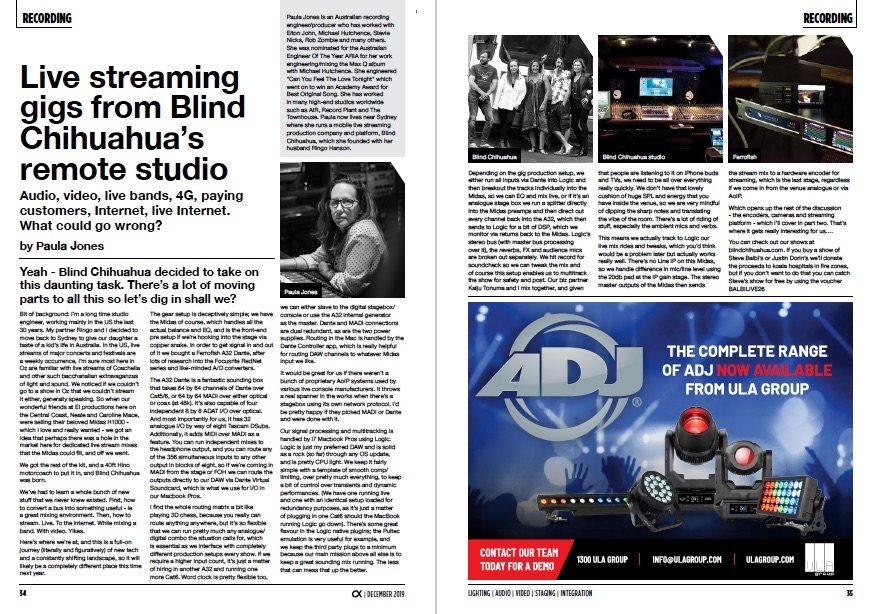News
13 Dec 2019
Live streaming gigs from Blind Chihuahua’s remote studio
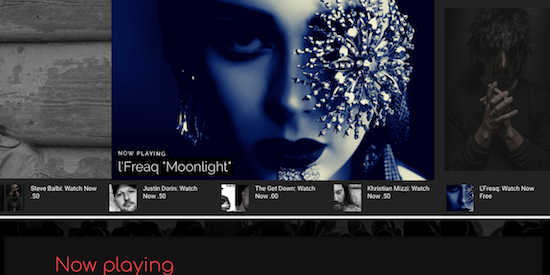
Subscribe to CX E-News
RECORDING
Live streaming gigs from Blind Chihuahua’s remote studio
Audio, video, live bands, 4G, paying customers, Internet, live Internet. What could go wrong? Yeah – Blind Chihuahua decided to take on this daunting task. There’s a lot of moving parts to all this so let’s dig in shall we?
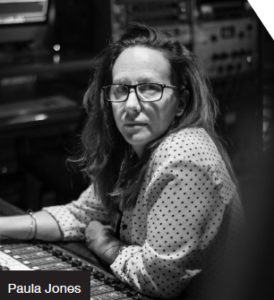 Paula Jones is an Australian recording engineer/producer who has worked with Elton John, Michael Hutchence, Stevie Nicks, Rob Zombie and many others. She was nominated for the Australian Engineer Of The Year ARIA for her work engineering/mixing the Max Q album with Michael Hutchence. She engineered “Can You Feel The Love Tonight” which went on to win an Academy Award for Best Original Song. She has worked in many high-end studios worldwide such as AIR, Record Plant and The Townhouse. Paula now lives near Sydney where she runs a mobile live streaming production company and platform, Blind Chihuahua, which she founded with her husband Ringo Hanson.
Paula Jones is an Australian recording engineer/producer who has worked with Elton John, Michael Hutchence, Stevie Nicks, Rob Zombie and many others. She was nominated for the Australian Engineer Of The Year ARIA for her work engineering/mixing the Max Q album with Michael Hutchence. She engineered “Can You Feel The Love Tonight” which went on to win an Academy Award for Best Original Song. She has worked in many high-end studios worldwide such as AIR, Record Plant and The Townhouse. Paula now lives near Sydney where she runs a mobile live streaming production company and platform, Blind Chihuahua, which she founded with her husband Ringo Hanson.
Bit of background: I’m a long time studio engineer, working mainly in the US the last 30 years. My partner Ringo and I decided to move back to Sydney to give our daughter a taste of a kid’s life in Australia.
In the US, live streams of major concerts and festivals are a weekly occurrence, I’m sure most here in Oz are familiar with live streams of Coachella and other such bacchanalian extravaganzas of light and sound.
We noticed if we couldn’t go to a show in Oz that we couldn’t stream it either, generally speaking. So when our wonderful friends at EI productions here on the Central Coast, Neale and Caroline Mace, were selling their beloved Midas H1000 – which I love and really wanted – we got an idea that perhaps there was a hole in the market here for dedicated live stream mixes that the Midas could fill, and off we went.
We got the rest of the kit, and a 40ft Hino motorcoach to put it in, and Blind Chihuahua was born. We’ve had to learn a whole bunch of new stuff that we never knew existed. First, how to convert a bus into something useful – ie a great mixing environment. Then, how to stream. Live. To the internet. While mixing a band. With video. Yikes.
Here’s where we’re at, and this is a full-on journey (literally and figuratively) of new tech and a constantly shifting landscape, so it will likely be a completely different place this time next year.
The gear setup is deceptively simple; we have the Midas of course, which handles all the actual balance and EQ, and is the front-end pre setup if we’re hooking into the stage via copper snake. In order to get signal in and out of it we bought a Ferrofish A32 Dante, after lots of research into the Focusrite RedNet series and like-minded A/D converters.
The A32 Dante is a fantastic sounding box that takes 64 by 64 channels of Dante over Cat5/6, or 64 by 64 MADI over either optical or coax (at 48k). It’s also capable of four independent 8 by 8 ADAT I/O over optical. And most importantly for us, it has 32 analogue I/O by way of eight Tascam DSubs.
Additionally, it adds MIDI over MADI as a feature. You can run independent mixes to the headphone output, and you can route any of the 356 simultaneous inputs to any other output in blocks of eight, so if we’re coming in MADI from the stage or FOH we can route the outputs directly to our DAW via Dante Virtual Soundcard, which is what we use for I/O in our Macbook Pros.
I find the whole routing matrix a bit like playing 3D chess, because you really can route anything anywhere, but it’s so flexible that we can run pretty much any analogue/digital combo the situation calls for, which is essential as we interface with completely different production setups every show.
If we require a higher input count, it’s just a matter of hiring in another A32 and running one more Cat6. Word clock is pretty flexible too, we can either slave to the digital stagebox/console or use the A32 internal generator as the master.
Dante and MADI connections are dual redundant, as are the two power supplies. Routing in the Mac is handled by the Dante Controller app, which is really helpful for routing DAW channels to whatever Midas input we like.
It would be great for us if there weren’t a bunch of proprietary AoIP systems used by various live console manufacturers. It throws a real spanner in the works when there’s a stagebox using its own network protocol. I’d be pretty happy if they picked MADI or Dante and were done with it.
Our signal processing and multitracking is handled by i7 Macbook Pros using Logic. Logic is just my preferred DAW and is solid as a rock (so far) through any OS update, and is pretty CPU light.
We keep it fairly simple with a template of smooth comp/limiting, over pretty much everything, to keep a bit of control over transients and dynamic performances. (We have one running live and one with an identical setup loaded for redundancy purposes, as it’s just a matter of plugging in one Cat6 should the MacBook running Logic go down).
There’s some great flavour in the Logic native plugins; the Pultec emulation is very useful for example, and we keep the third party plugs to a minimum because our main mission above all else is to keep a great sounding mix running. The less that can mess that up the better.
Depending on the gig production setup, we either run all inputs via Dante into Logic and then breakout the tracks individually into the Midas, so we can EQ and mix live, or if it’s an analogue stage box we run a splitter directly into the Midas preamps and then direct out every channel back into the A32, which then sends to Logic for a bit of DSP, which we monitor via returns back to the Midas.
Logic’s stereo bus (with master bus processing over it), the reverbs, FX and audience mics are broken out separately. We hit record for soundcheck so we can tweak the mix and of course this setup enables us to multitrack the show for safety and post.
Our biz partner Kalju Tonuma and I mix together, and given that people are listening to it on iPhone buds and TVs, we need to be all over everything really quickly. We don’t have that lovely cushion of huge SPL and energy that you have inside the venue, so we are very mindful of dipping the sharp notes and translating the vibe of the room.
There’s a lot of riding of stuff, especially the ambient mics and verbs. This means we actually track to Logic our live mix rides and tweaks, which you’d think would be a problem later but actually works really well.
There’s no Line IP on this Midas, so we handle difference in mic/line level using the 20db pad at the IP gain stage. The stereo master outputs of the Midas then sends the stream mix to a hardware encoder for streaming, which is the last stage, regardless if we come in from the venue analogue or via AoIP.
Which opens up the rest of the discussion – the encoders, cameras and streaming platform – which I’ll cover in part two. That’s where it gets really interesting for us….
You can check out our shows at blindchihuahua.com.
If you buy a show of Steve Balbi’s or Justin Dorin’s we’ll donate the proceeds to koala hospitals in fire zones, but if you don’t want to do that you can catch Steve’s show for free by using the voucher BALBILIVE26
CX Magazine – Dec 2019 Entertainment technology news and issues for Australia and New Zealand – in print and free online www.cxnetwork.com.au
© CX Media
Subscribe
Published monthly since 1991, our famous AV industry magazine is free for download or pay for print. Subscribers also receive CX News, our free weekly email with the latest industry news and jobs.

